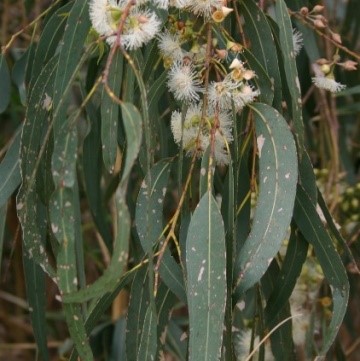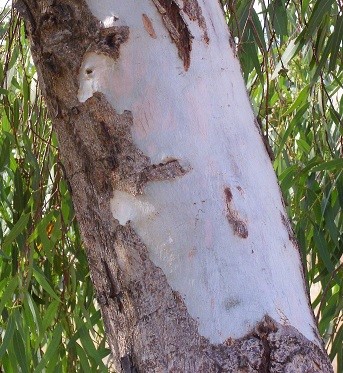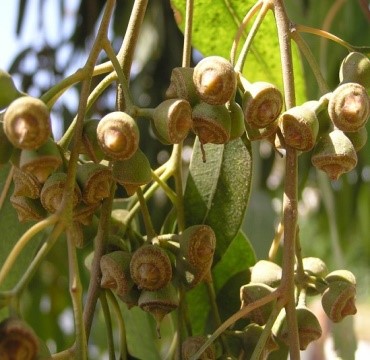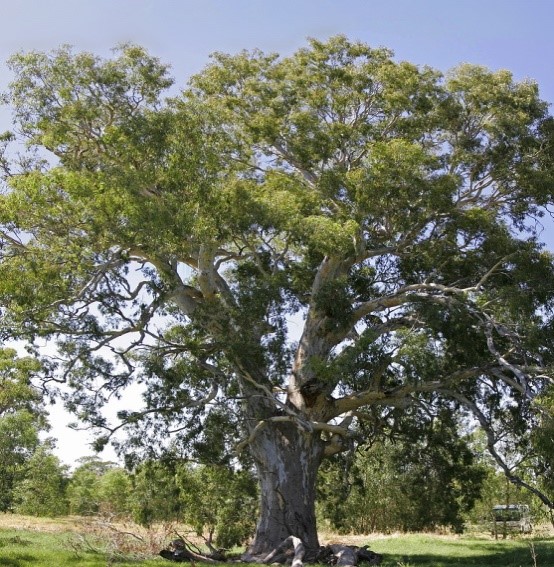Trees
Eucalyptus camaldulensis Dehn.
Eucalyptus camaldulensis Dehn.
Description :
A
large, evergreen tree, up to 40 m tall with a diameter of 1 to 2 m. The crown
is spreading and irregular. The leaves are simple, narrow and lance shaped, 6
to 30 cm long and 0.8 to 2 cm wide. The leaves have a unique eucalyptus smell
when crushed. The bark is smooth, and stem may be crooked. The bark is whitish,
pale grey with mottle reddish patches. Pieces of the bark will shed in long
strips or irregular flakes. The flowers, which occur in groups of fives and
tens, bloom usually between May and June. The fruit is a capsule containing
many small seeds and is shaped like a half globe 0.7 cm in diameter. The
capsules mature between September and October. Young trees may be attacked by
termites, but with age it is pest free. It is reproduced both from seed and by
vegetative means. Seed sealed in airtight containers will remain viable for long
periods in cold storage. It grows very fast. Height growth rates of 0.3 m/month
for young stands have been reported. MAI of 10 to 25 m3/ha/yr is not
uncommon. Twisted and interlocked, medium coarse, uneven texture Grains.
Sapwood is light grey; heartwood is reddish brown with specific gravity of 0.71
and a calorific value of 4900 kcal/kg, with high strength.
Distribution :
The
tree is native to Australia. It is widely planted in arid areas throughout the
world. In Pakistan it is successfully planted throughout the plains and in the
hills. A very intolerant tree that grows on a variety of soils. It does well on
saline, sodic and waterlogged sites. It is adapted to a precipitation zone of
200 to 1250 mm/yr or more. It prefers a semi-arid, warm hot, sub-tropical
winter/monsoon rain climate with a temperature range of -5 to 40°C at
elevations up to 1400 m. It coppices well and can be grown in mixed stands. It
is frost hardy and can tolerate hot droughty conditions if irrigated or if
there is a shallow water table.
Uses :
This is a good tree for
reforestation projects because of its fast growth and wood value. Farmers like
it because of its fast growth. There is some evidence that this tree may compel
with crops for moisture. It is an excellent farm forestry tree ideally suited
for planting on saline, sodic and waterlogged farm sites. Also used in
carriages, fuel, charcoal, furniture, oil (leaves), shelterbelt, apiculture,
pulp, and fiber board.



